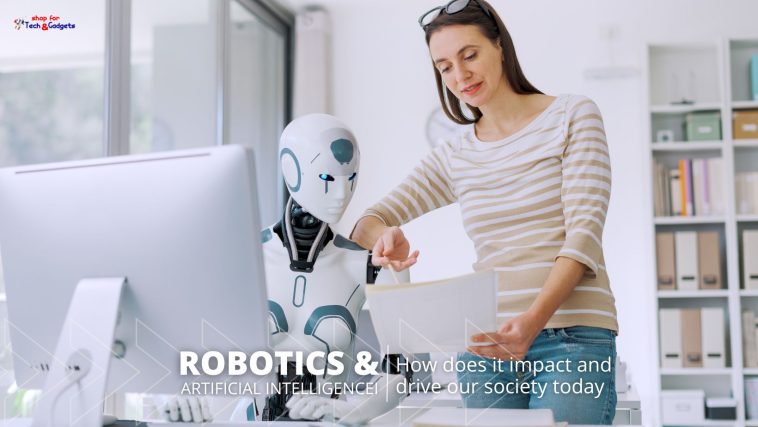Technology has advanced at an extraordinary pace over the past few decades, with breakthroughs that once seemed like science fiction now becoming reality. From robotics to AI (autonomous machines with artificial intelligence), the world is witnessing a revolution that is reshaping industries, economies, and everyday life.
Among the most groundbreaking yet often misunderstood innovations are robotics and AI. While these technologies promise greater efficiency, automation, and even companionship, they also raise concerns about job displacement, ethics, and human dependency on machines. According to a recent Pew Research survey, more than 70% of Americans express concerns about a future where machines take over most jobs traditionally performed by humans. The rise of AI-powered automation has sparked debates on its long-term impact on society, employment, and even human identity.
Despite these concerns, experts and innovators around the world believe that humans and robots can coexist in harmony, complementing each other’s strengths rather than replacing one another. Leading this conversation is Mouser Electronics Inc., a globally recognized semiconductor and electronics component supplier based in Fort Worth, Texas. Alongside celebrity engineer Grant Imahara, they have launched an ambitious initiative aimed at demystifying robotics and AI, showing how they can benefit humanity rather than pose a threat.
The Generation Robot Initiative: Exploring the Future of Robotics
Mouser Electronics, in partnership with Grant Imahara, initiated the Empowering Innovation Together program for the fourth consecutive year. This year’s focus is on “Generation Robot,” a multi-part video series that explores the real-world impact of robotics and AI across different industries and cultures.
Through this project, Mouser aims to engage engineers, tech enthusiasts, and the general public by showcasing how robots are revolutionizing healthcare, manufacturing, and even everyday human interaction. The series also seeks to challenge misconceptions surrounding AI-driven automation by highlighting its ethical, social, and economic implications.
The five-episode documentary series takes viewers on a global journey to explore cutting-edge robotics innovations, with stops in the United States, Germany, and Japan. These locations were carefully selected to highlight different aspects of robotics, from research institutions to commercial applications.
The Psychological Shift in Robotics
The first episode of the series takes Grant Imahara to the Institute for Robotics and Intelligent Machines at Georgia Tech, where he meets with Dr. Magnus Egerstedt, the institute’s executive director.
Traditionally, robotics has been viewed as an engineering-driven discipline, focused on mechanics, coding, and hardware. However, as Dr. Egerstedt explains, modern robotics has evolved into something far more complex—it now involves psychology and human interaction.
Why? Because the next generation of robots won’t just function behind factory walls—they will work alongside humans in everyday life. For this reason, engineers are developing machines that can understand human emotions, recognize social cues, and even adapt to different cultural contexts. This is a major shift from previous decades when robots were built primarily for repetitive, programmed tasks with no human-like adaptability.
Humans and Robots Working Together
The second episode takes viewers to Augsburg, Germany, home to some of the world’s most advanced robotics research facilities. Here, the focus is on human-robot collaboration (HRC), a concept that is becoming increasingly important in modern workplaces.
Unlike traditional automation—where robots replace human workers—HRC envisions a symbiotic relationship between humans and intelligent machines. This means robots will handle dangerous, repetitive, or physically demanding tasks, allowing humans to focus on creativity, strategy, and problem-solving.
Companies like KUKA Robotics have pioneered this approach, designing robots that work in car manufacturing, logistics, and even the medical field. In healthcare, for instance, robotic arms assist in surgeries by providing unparalleled precision, while AI-powered assistants help nurses monitor patients’ vital signs in real-time.
AI-Powered Hotels in Japan
One of the most fascinating destinations in the series is Nagasaki, Japan, home to the Henn-na Hotel, a world-first where robots handle nearly every task. Here, Imahara explores how AI is integrated into hospitality services, from check-ins to concierge assistance.
At the Henn-na Hotel, humanoid robots greet guests, handle luggage, and provide information about nearby attractions. But what’s even more impressive is the use of machine learning and speech recognition, enabling robots to understand guest preferences and respond in real-time.
While this concept may seem futuristic, it represents a larger trend in automation and AI-driven services. Major hotel chains and airports worldwide are experimenting with similar technology to streamline customer service, reduce costs, and improve operational efficiency.
The Broader Impact of Robotics and AI in 2025
1. AI and Automation in the Workforce
One of the biggest fears regarding AI and robotics is job displacement. However, experts argue that automation will create as many jobs as it replaces—just in different sectors.
- Jobs in AI development, data analysis, and robotics engineering are booming.
- The demand for human skills like emotional intelligence, creativity, and critical thinking is expected to grow.
- Instead of replacing workers, AI-powered tools will enhance productivity, allowing employees to focus on higher-value tasks.
2. The Ethical Dilemma: AI and Decision-Making
As AI becomes more integrated into society, ethical concerns arise:
- Who is responsible when an autonomous system makes a mistake?
- Can robots be trusted to make life-or-death decisions (e.g., in self-driving cars or AI-driven healthcare)?
- How can we ensure that AI does not inherit biases from human programmers?
Governments and tech leaders are actively working on AI ethics frameworks to ensure that these technologies benefit society without unintended consequences.
3. Robotics in Everyday Life
While AI-powered robots are making a significant impact in industries, they are also slowly entering personal spaces:
- Social robots, such as AI-driven assistants and robotic pets, are being designed to provide companionship.
- Elderly care robots are helping aging populations by offering assistance with daily tasks and medication reminders.
- Smart home automation powered by AI can now predict user behavior and adjust settings accordingly.
A Future of Collaboration, Not Competition
The idea of AI and robots replacing humans is a common fear, but the reality is far more nuanced. Rather than eliminating jobs, robotics and AI will redefine the nature of work, shifting human roles toward more meaningful, creative, and strategic tasks.
Through projects like Generation Robot, companies like Mouser Electronics are highlighting the immense potential of AI and robotics to improve human lives—whether through workplace collaboration, healthcare advancements, or personalized services. The key challenge will be ensuring that these innovations are developed and deployed responsibly, with ethical considerations at the forefront.
As we move forward in 2025 and beyond, one thing is clear: The future won’t be robots vs. humans—it will be robots and humans working together to create a smarter, more efficient, and more connected world.
Sources & Further Reading:
- Pew Research Center: Public Views on AI and Robotics
- Mouser Electronics: Generation Robot Series
- Georgia Tech Robotics Institute: Human-Centered AI and Robotics
- Henn-na Hotel, Japan: AI-Powered Hospitality




